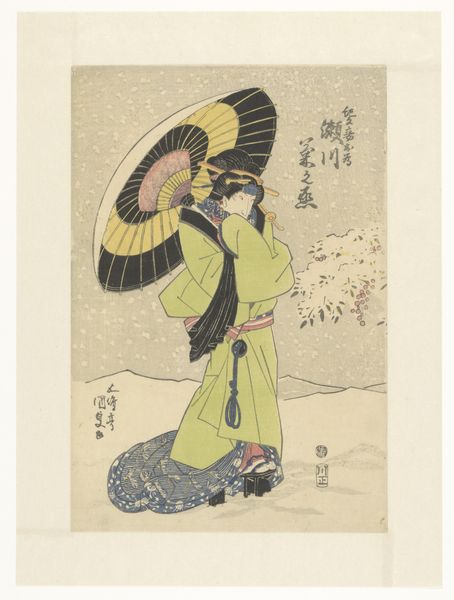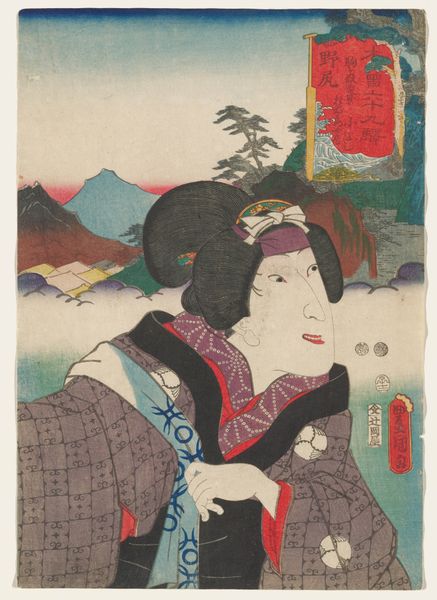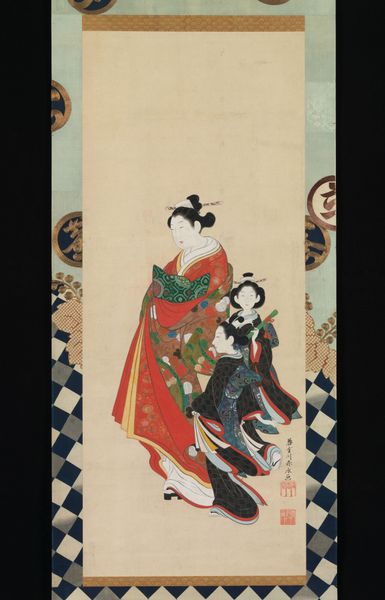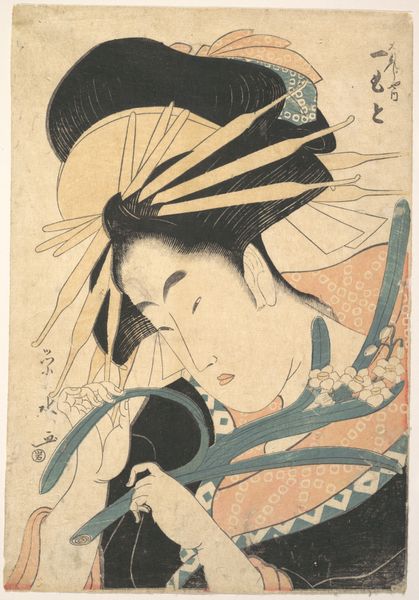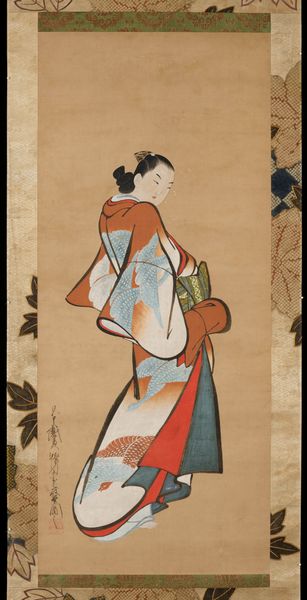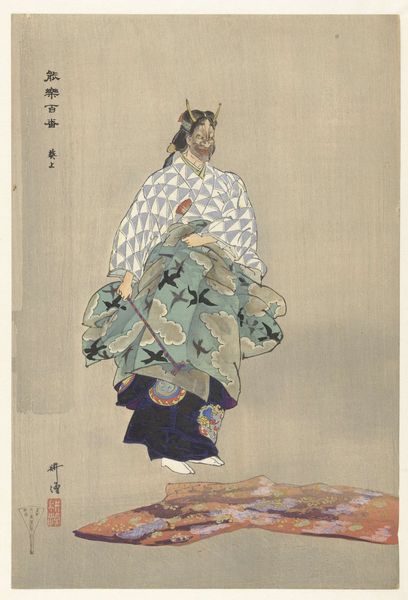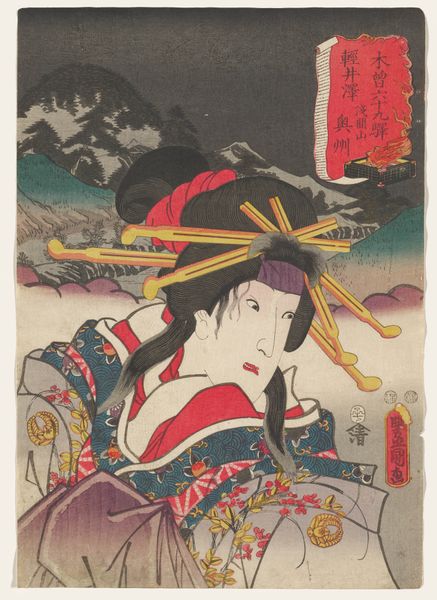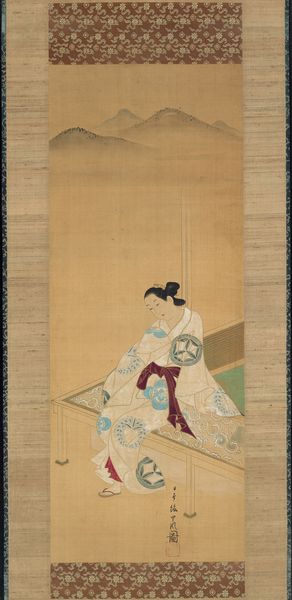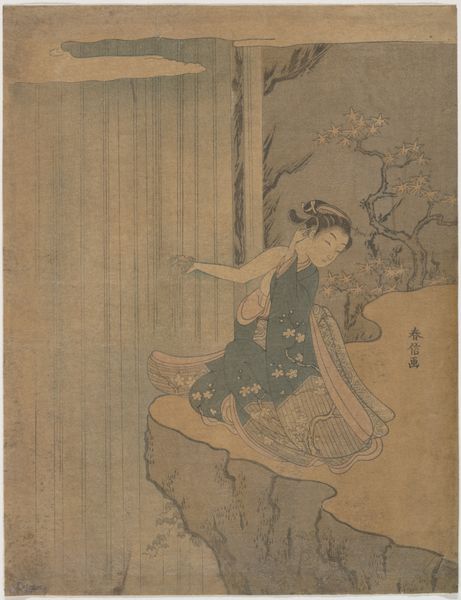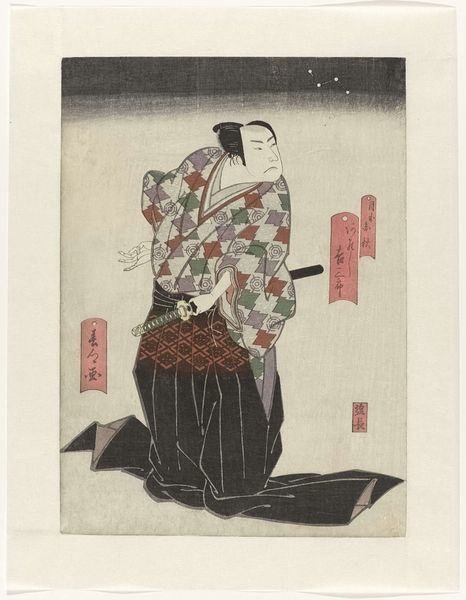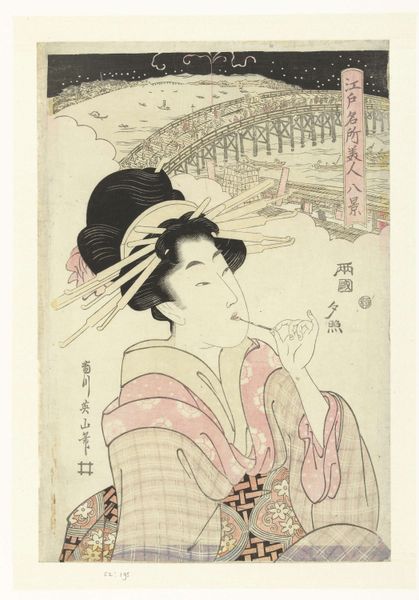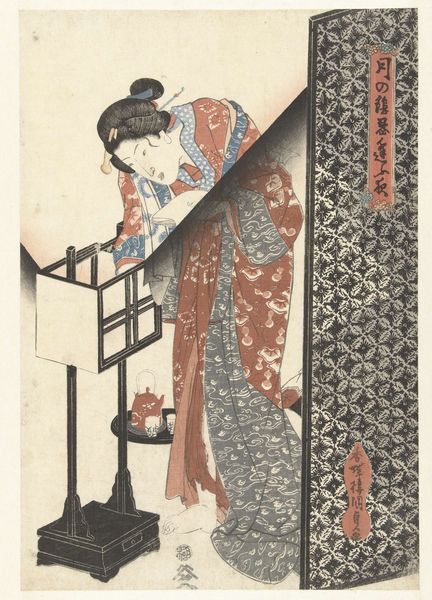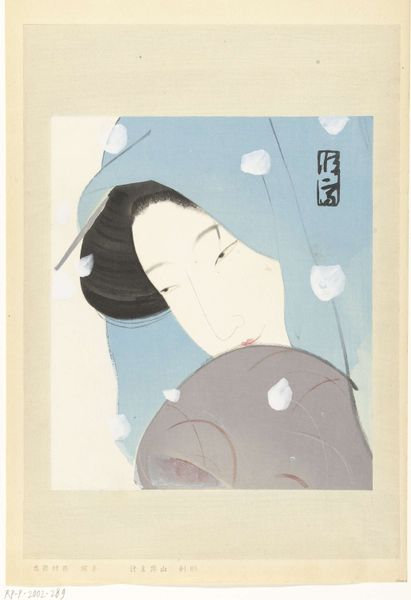
print, woodblock-print
#
portrait
# print
#
asian-art
#
landscape
#
bird
#
ukiyo-e
#
figuration
#
coloured pencil
#
woodblock-print
Dimensions: Image: 14 3/4 × 10 1/4 in. (37.5 × 26 cm)
Copyright: Public Domain
Curator: Let’s have a look at this striking image! It's a woodblock print created around 1832 by Gigadō Ashiyuki. The work is titled "Arashi Rikan II as Miyamoto Musashi," and it’s currently held at the Metropolitan Museum of Art. Editor: My first impression is of a cold, crisp winter day. There’s a wonderful contrast between the figure's patterned kimono and the surrounding snow. It also has an interesting tension, a feeling of constrained movement. Curator: Absolutely. Thinking about the woodblock printing process, the layers of color applied sequentially would have involved skillful coordination between the artist, the carver, and the printer. How do you think that material production influences the imagery we are viewing? Editor: The imagery presents the Kabuki actor Arashi Rikan II in the role of Miyamoto Musashi. The presence of Musashi—renowned swordsman, philosopher, and strategist—projects a strong historical and almost mythic aura. Note the bluebird – a symbol of happiness and longevity in Japanese art. Curator: Yes, but what were the actual conditions in which those blocks were produced? What were the inks composed of, and how were they sourced and priced relative to other consumables? That’s crucial for understanding the social meaning behind this relatively accessible mode of cultural production. Editor: True, but looking at it symbolically, Musashi's stern expression and posture suggest he’s facing some unseen challenge. Perhaps this alludes to his legendary duels, the constant striving for perfection. He embodies both intellectual and martial prowess. Curator: Interesting, though that heroism has to be contextualized against the highly regulated system governing the actor's world; those Kabuki theaters operated within a very rigid social framework. Editor: All that aside, I find this small waterfall on the right visually calming. Symbolically, waterfalls in Japanese art are tied to notions of purity and renewal, further adding nuance to the symbolism. Curator: I concede that the waterfall might imply something to certain viewers, however its existence is completely dependent on access to reliable, consistent, water-based inks, a key ingredient. Editor: A great reminder that even in depictions of individual stoicism, there are layers of production and symbolism constantly at play. Curator: Indeed, by considering both the means of its production, and what that symbolism meant at the time, a more full view is revealed.
Comments
No comments
Be the first to comment and join the conversation on the ultimate creative platform.
